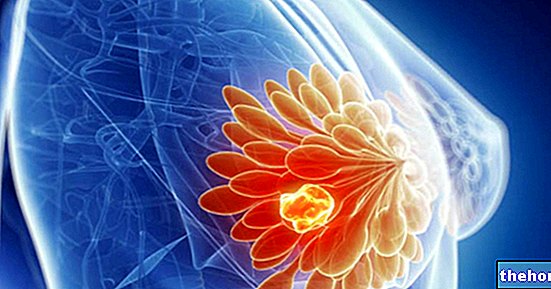" first part
Is there a link between menstruation and iron deficiency?
Each ml of blood lost during menstruation is accompanied by a loss of about 0.5 mg of iron. It is difficult to quantify the volume of these losses: a reasonable average is between 30 and 60 ml per month, but some women can lose much less or much more without trespassing into the abnormality. Considering an average value of 46 ml and distributing total losses (46/2 = 23 mg) for the 30 days of the month, a daily surplus of 0.76 mg is obtained. To meet this quota, approximately 7.6 mg of extra iron per day is needed, since, always generally speaking, only 10% of the iron ingested with food is actually absorbed.
A "correct diet, both from a quantitative and qualitative point of view, is perfectly able to compensate for these losses. On the contrary, a low-calorie diet low in food of animal origin and / or too abundant in vegetables and whole foods, favors the "onset of deficiency states. The risk further increases if you engage in too intense physical activity. In these conditions, after consulting a doctor, an iron-based dietary supplement may help.
Is there a link between menstruation and fertility? Can i get pregnant if i have never had a period?
It is not possible to give a simple answer to these questions: when it comes to menstruation, fertility and contraception, there are only probabilities and few certainties.
If a girl has never had menstruation, it is highly probable that she will not be able to get pregnant, but this could occur if sexual intercourse takes place in the days next to or corresponding to the first ovulation (which precedes menarche by about fourteen days). And again ... menstruation is not necessarily synonymous with female fertility. This statement is especially valid for the initial and final phases of the fertile period, during which anovulatory cycles are frequent. Even menstruation induced by the temporary suspension of oral contraceptive therapy is only fictitious, because ovulation is prevented by the hormones contained in the pill.
Finally, it is also possible to become pregnant due to sexual intercourse during menstruation.
Can i play sports during menstruation?
During menstruation there is no contraindication to any sporting discipline, with the exception of cold water activities in the first days of the cycle (which coincide with the beginning of menstruation).
Why can menstruation be painful?
A certain degree of pain or slight discomfort in the pelvic area is quite common at the beginning of the flow. When the painful symptomatology is accentuated to interfere with daily activities it is called dysmenorrhea. This disorder manifests itself with pains of varying degrees to load of the abdomen, with a procession of other manifestations culminating in a sense of general malaise (cramping pains in the lower abdomen, extending to the lower back, sometimes with nausea and headache).
Especially young women suffer from menstrual pain, where in the vast majority of cases there are no organic alterations. Generally, in fact, painful menstruation represents a benign event and only rarely can they be caused by inflammatory or neoplastic pathologies of the genital system. In the absence of the aforementioned pathologies, painful cramps are often triggered by an excessive secretion of prostaglandins (substances with action proinflammatory that stimulate the contraction of the uterus).
Often psychological factors also intervene such as a bad relationship with one's sexuality; these conflicts, combined with anxiety and waiting stress, contribute to fueling a vicious circle from which it is often difficult to escape.
In the treatment of dysmenorrhea it is frequent to resort to supplements of magnesium, a mineral present in fruit and cereals, which exerts a relaxing and antispastic action on the uterus. Magnesium-based dietary supplements, in ampoules or sachets, should be taken at least one week before the flow.
Also the elimination of stress and inner conflicts represents a valid tool to reduce the intensity of hostile demonstrations. Yoga lessons, a hot water bottle to keep on the abdomen and anything else that helps the woman to relax can help. There are also specific drugs, such as mefenamic acid, which can inhibit the release of prostaglandins. .
Hormonal contraceptives, which block ovulation and help relieve pain, regularizing the cycle and reducing the production of prostaglandins, can also be useful to combat lower abdomen spasms and lumbar pains.
Menstruation in the middle of your cycle?
The bleeding that occurs in the intermenstrual period generally coincides with ovulation and therefore appears in the middle of the cycle. Generally it is modest bleeding (bleeding) or even very little (spotting).
Intermenstrual bleeding can also be linked to pathological factors (local organic causes, even serious ones) or to endocrine disorders (they are more frequent in the adolescent and perimenopausal period).
Finally, they represent a side effect of some estrogen-progestogen pills with a low concentration of estrogens. If this side effect does not disappear within the first three months from the start of therapy, it is advisable to carry out a gynecological examination to switch to a pill with slightly higher estrogen dosages.
What is amenorrhea?
The absence of menstrual flow is defined as amenorrhea. We speak of primary amenorrhea if the menstruation has not appeared by the age of 16, while after a suspension of the cycle that has lasted for three or more months we speak of secondary amenorrhea.
In the first case, if the girl is in good health and does not suffer from particular pathologies, there may be anatomical malformations of the genital apparatus. Secondary amenorrhea is instead supported by hormonal disorders or particular diseases (ovarian or pituitary neoplasms, polycystic ovary , anemia, anorexia nervosa, hypothyroidism, chronic alcoholism, severe obesity, some drugs).
The absence of menstrual flow for one to three months can be a side effect of taking progestin birth control pills (minipill) or the interruption of estrogen-progestin therapy. Finally, there is also a physiological amenorrhea linked to the situations of pregnancy, lactation and menopause.
Amenorrhea, associated with osteoporosis and eating disorders, is commonly embedded in a picture known as the "female athlete triad". This condition is common among professional athletes and, more generally, among women who practice a lot of physical activity without eating properly. Like physical stress, emotional factors or psychopathies can also cause secondary amenorrhea.



























